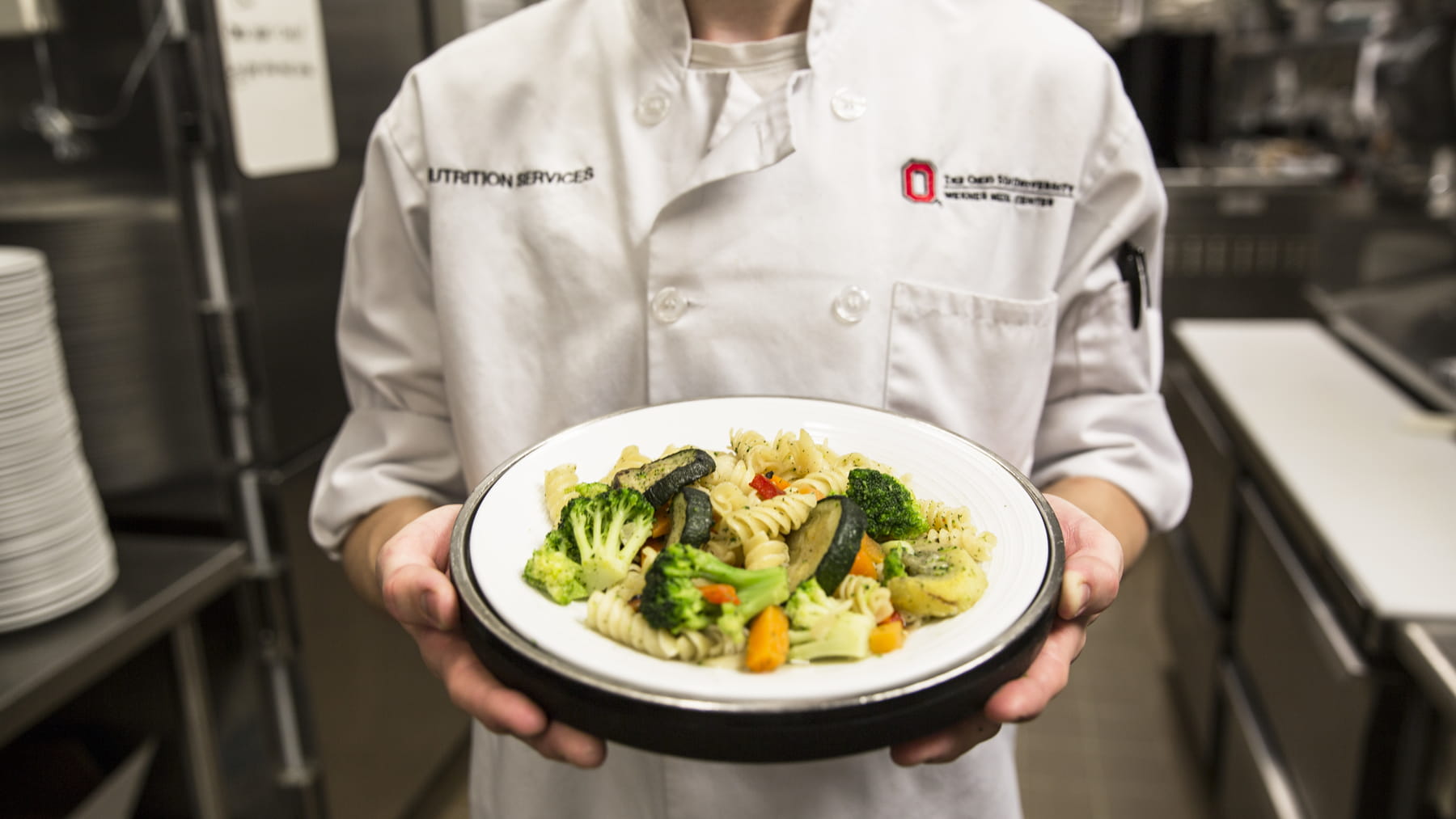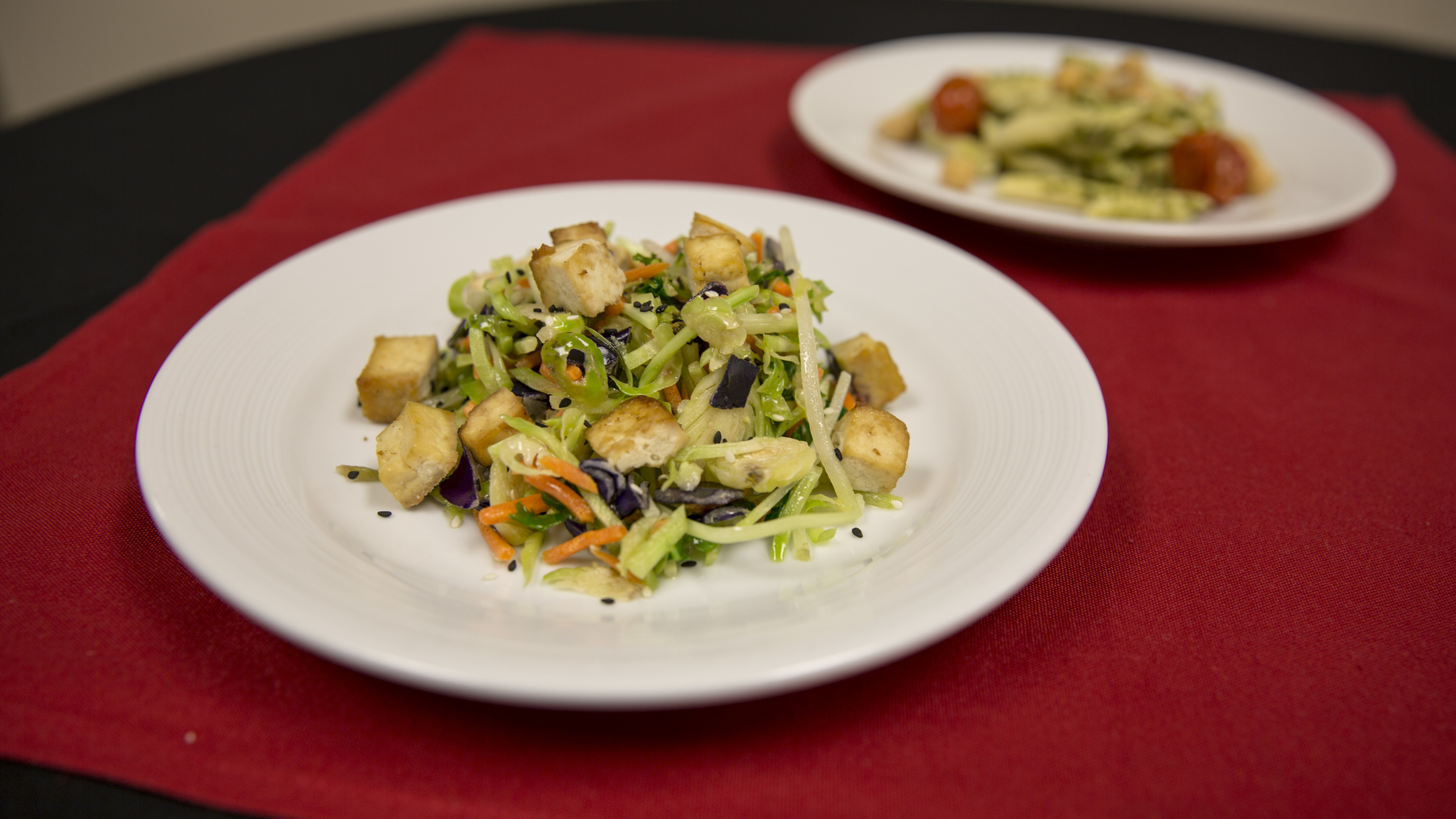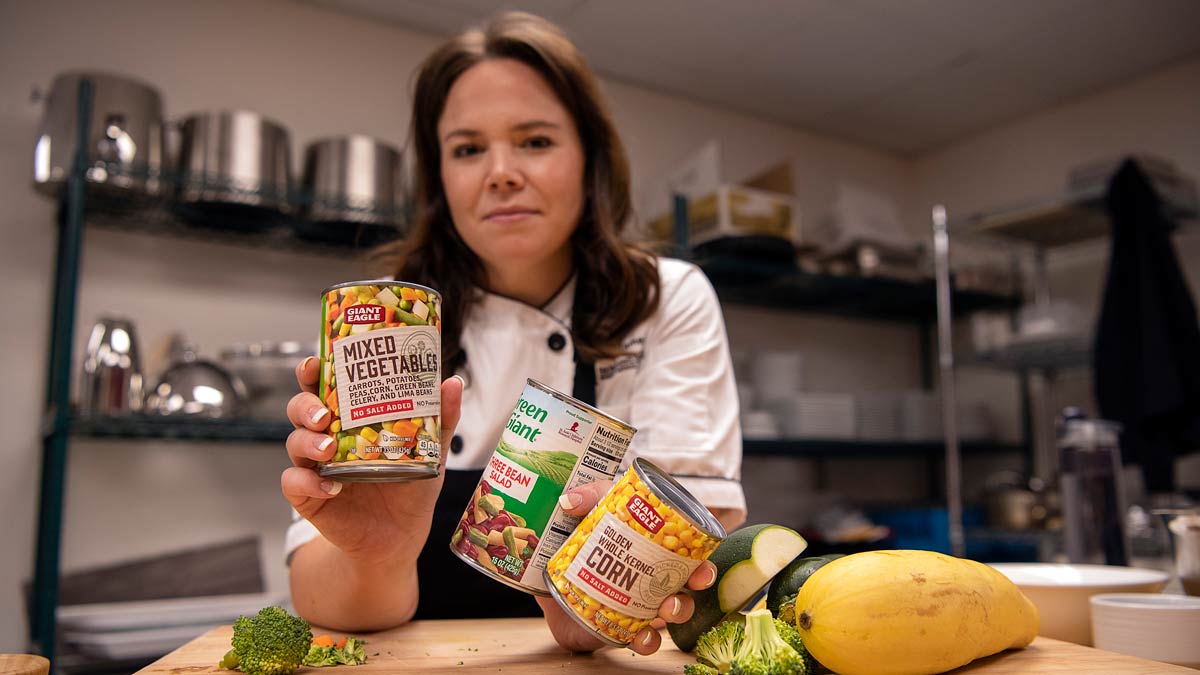New plant-based menu options benefit patients
 As more Americans look for low-cost diets that benefit both their health and the environment, many are turning to plant-based diets.
As more Americans look for low-cost diets that benefit both their health and the environment, many are turning to plant-based diets.
Research shows that limiting oils, animal products and processed foods and eating more non-starchy vegetables, fruits, lentils and nuts can help you lose weight and lower your blood pressure and cholesterol, among other benefits.
In some cases, plant-based diets have helped those with chronic illnesses bounce back to health.
Ravi Tripathi, MD, an anesthesiologist at The Ohio State University Wexner Medical Center, is one of a growing number of physicians who see the benefits of plant-based diets, not only for patients, but also for themselves.
On July 11, Ohio State Wexner Medical Center added plant-based meals to the menu options available for all patients. Culinary Director Drew Patterson credits Tripathi’s persistence for making the addition.
“He brought up the idea based on his belief that patients’ health could benefit and that it would be another great option on our menus,” Patterson says.
A pilot program for plant-based meals first rolled out to Tripathi’s unit in the Ross Heart Hospital, where he could help introduce the menu and ask patients how they liked it.
 Burrito in a Bowl and Pasta Primavera are among the plant-based options available to patients at Ohio State Wexner Medical Center.
Burrito in a Bowl and Pasta Primavera are among the plant-based options available to patients at Ohio State Wexner Medical Center.
“This gave us real-time feedback and the ability to tweak the menu quickly,” Patterson says. “We played with the menu for about a year and a half, figuring out what worked. It’s been a very popular option so far, and patients have started asking for it.”
Dr. Tripathi will share his plant-based experience and the diet’s merits at a July 26 talk as part of the weekly Ross Heart Hospital Community Garden series. Here’s a sneak preview:
The difference between “plant-based” and “vegan”
Vegan diets use no animal products (meat, dairy, eggs or other animal-derived foods). Some vegans are motivated by protecting animal rights.
“A whole-food, plant-based diet focuses more on health than on animal rights,” Tripathi says.
Eating “plant-based” can also give you more wiggle room than a vegan diet.
“I still sometimes eat breads that have dairy in them, and I’ll eat scallops or a steak on vacation.”
Why try eating plant-based?
How to get started with a plant-based diet
Tripathi and other proponents of the diet suggest trying it for 10 days to gauge how you feel.
Talk with your doctor or a dietitian to make sure you’re still getting enough nutrients. Begin by focusing on eating more vegetables, fruits, whole grains, beans, nuts and seeds. Scale back on animal products or cut them out completely. Gradual steps also work well, as Dr. Tripathi found.
“I started doing meatless Mondays,” he says. “Then it turned into Monday and Tuesday, then Monday through Friday. Eventually, I would feel great on Friday, but on Monday I’d feel lousy again. Once I made the change to a full week of plant-based eating, I felt better.”
Plant-based recipes to try:




